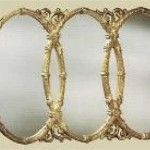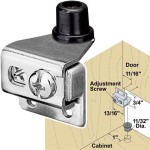What is Mirror Image in Mathematics?
The concept of mirror image, also known as reflection, appears in various branches of mathematics, from basic geometry to more complex areas like linear algebra and group theory. It essentially describes a transformation that "flips" an object over a line or plane, creating a reversed image. This article explores the multifaceted nature of mirror images in mathematics.
Mirror Image in Geometry
In geometry, reflection is a transformation that flips a figure over a line (in 2D) or a plane (in 3D), called the line or plane of reflection. Several key properties define this transformation:
* The line of reflection acts as a perpendicular bisector to the segment connecting any point on the original figure to its corresponding point on the reflected image. * The distance between any point and the line of reflection is equal to the distance between its reflected image and the line of reflection. * The orientation of the figure is reversed. For example, a clockwise arrangement of points in the original figure becomes counterclockwise in the reflected image. * Reflections preserve lengths and angles. The reflected figure is congruent to the original. * A figure reflected twice across the same line returns to its original position.
Mirror Symmetry and Lines of Symmetry
Mirror symmetry, also known as reflection symmetry or line symmetry, describes a characteristic of figures that can be divided into two identical halves by a line of symmetry. This line acts as the mirror, reflecting one half onto the other. Understanding mirror symmetry is crucial for:
* Classifying shapes: The number and arrangement of lines of symmetry help categorize different geometric figures. * Simplifying calculations: Symmetry can be used to simplify area and volume calculations in certain cases. * Analyzing patterns: Identifying lines of symmetry helps understand the underlying structure and repetitive patterns in designs and nature.
Mirror Image Transformations in Coordinate Geometry
In coordinate geometry, reflections can be represented using specific algebraic rules. These rules describe how the coordinates of a point change when reflected across a particular axis or line.
* Reflection across the x-axis: (x, y) becomes (x, -y). * Reflection across the y-axis: (x, y) becomes (-x, y). * Reflection across the line y = x: (x, y) becomes (y, x). * Reflection across the line y = -x: (x, y) becomes (-y, -x).
More complex reflections can be described using matrix transformations.
Mirror Image and Isometries
Reflections belong to a broader class of transformations called isometries. Isometries preserve distances between points and are crucial in studying congruence and similarity. Key points regarding reflections as isometries are:
* Reflections, along with rotations and translations, are the fundamental building blocks of all isometries in 2D. * Composition of reflections can produce other transformations, such as rotations and translations. * Understanding reflections and their interaction with other isometries is fundamental in Euclidean geometry.
Mirror Images in Linear Algebra
The concept of reflection extends beyond basic geometry into linear algebra, where it describes a specific type of linear transformation. These transformations are represented by matrices and have distinct properties:
* Reflection matrices are orthogonal matrices, meaning their inverse is equal to their transpose. * The determinant of a reflection matrix is -1. * Reflection transformations preserve the length of vectors but reverse their orientation.
Mirror Images in Group Theory
Group theory provides a powerful framework for studying symmetry and transformations. Reflections play a significant role in this framework, particularly in the study of symmetry groups.
* Reflection operations, along with rotations and other transformations, form symmetry groups that describe the symmetries of geometric objects. * The dihedral group, for example, is generated by reflections across lines of symmetry in regular polygons. * Understanding the properties of reflections within a group theoretic context is crucial for understanding the underlying symmetries of various mathematical structures.
Mirror Images and other Mathematical Concepts
The principle of reflection also underlies other mathematical concepts, further highlighting its versatile nature. These include:
* Inverse Functions: Graphically, the inverse of a function can be visualized as a reflection of the original function's graph across the line y = x. * Complex Conjugates: In complex numbers, the conjugate of a complex number can be seen as a reflection across the real axis in the complex plane. * Parity and Odd/Even Functions: Even functions exhibit symmetry across the y-axis, mirroring their values for positive and negative inputs. Odd functions exhibit rotational symmetry about the origin which incorporates reflection.

Mirror Image A Maths Dictionary For Kids Quick Reference By Jenny Eather

Reflection Symmetry Of The Image Mirror Line Symmetrical

Reflection Symmetry Of The Image Mirror Line Symmetrical

Mirror Lines Can Be Placed Anywhere You Just Reflect

Reflection Symmetry Of The Image Mirror Line Symmetrical

Reflection Symmetry Of The Image Mirror Line Symmetrical

Reflection Symmetry Of The Image Mirror Line Symmetrical

Reflection Symmetry Of The Image Mirror Line Symmetrical

Mirror Lines Can Be Placed Anywhere You Just Reflect

11 Plus Key Stage 2 Maths Shape And Space Transformation Reflection Practice Papers Ks2 Is The Image That You Would See If Looked At A








